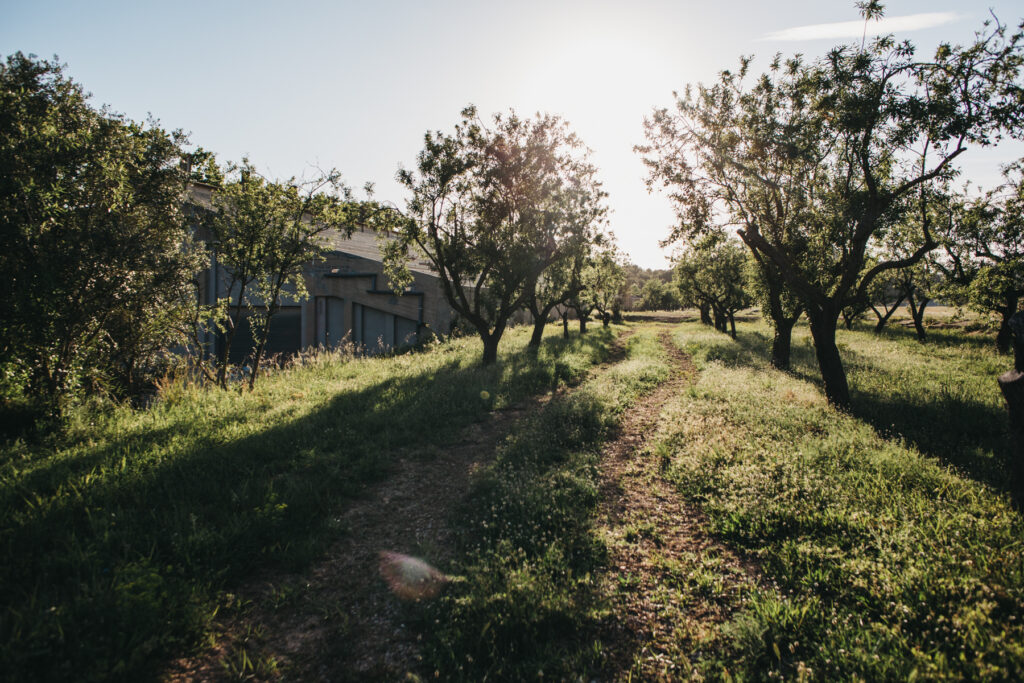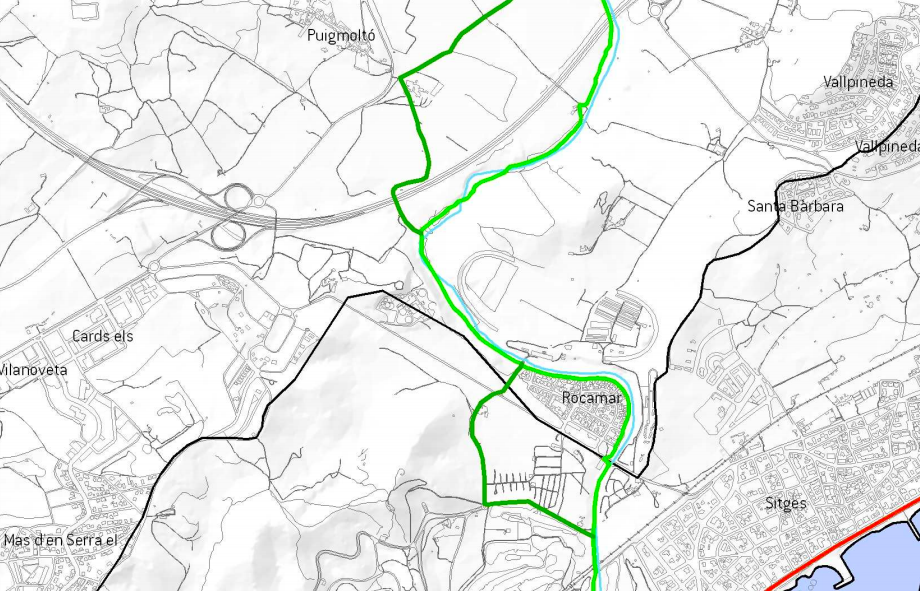The Sant Pere de Ribes general urban plan included provision for 91,134 m2 of buildable land around the Autodrome Terramar. With this current project, this area has been reduced to 52,628 m2.
-
Previous project proposals submitted for this site in the past proposed way more than the 90,000 m2 considered
-
In our project, we want to preserve and enhance the natural environment, and the landscape is actually a key component of our plans
The Sant Pere de Ribes general urban plan included provision for up to 91,134 m2 of buildable land around the Autodrome Terramar. However, in our project to restore this abandoned site, we have reduced this figure by almost half to 52,628 m2. This figure also includes the historic buildings already on the site, which we plan to restore, and the 3,000 m2 of land donated to the local council for sports facilities. If any project in the future wanted to increase this buildable surface area, it would have to go through the local planning procedures all over again.
This is one of the clearest demonstrations of the project’s commitment to preserve the local nature and wildlife, which was explained recently in two interviews with Matthieu Liard, director of the Autodrome Terramar, and Jordi Artigas, the urban planner in charge of the project.
The Autodrome Terramar restoration project aims to revitalise this unique place and open it up once again to the public – something which hasn’t happened since the last race here in 1956. We want the more than 144,000 m2 of green land to be enjoyed by everyone, whether it be the nature and landscape or the various equestrian and motoring events that are planned for the future.
There are also plans to include a restaurant and a low-density hotel area, comprising small villas and restored historic buildings. “We have always focused a lot on ensuring that the project is both sustainable and well-integrated because we believe that the site’s greatest asset is the landscape, and we want to ensure that the hotel area reflects that”, said Matthieu Liard.

The environmental side of the project
The people leading this project explain that “the concern for the environment is understandable, especially in a place as important as this, but there have been speculative things said that are simply not true. We are not going to build four hotels (as some people have suggested), and we are not going to build a 3000-space tarmac carpark. Of course, there will be events, such as classic car shows, where we expect to receive a maximum of 1,500 vehicles on site, but the car park will have a permeable organic surface, and the dry-stone walls in that area will be restored and preserved”.
As for the area of vines in the north of the site, they will be transplanted and this farming soil will be compensated for with the planting for a 50% larger area nearby. In fact, in the north, an entire hectare will become an organic farm for consumption on site.
Furthermore, we have already received approval for our plans to improve and restore the forests and Riera de Ribes and improve the site’s ecological connectivity.
The plans include 144,000 m2 of green space, 25,000 m2 of land for open-air sports and the planting of more than 700 trees of indigenous species, as well as preserving the existing trees on site. There are also plans to create a green route and establish a pedestrian route at one of the entrances, which at the moment is only suitable for vehicles. If that weren’t enough, there are also intended measures to optimise the management of resources and improve the site’s biodiversity (you can consult all these measures in our green code).




